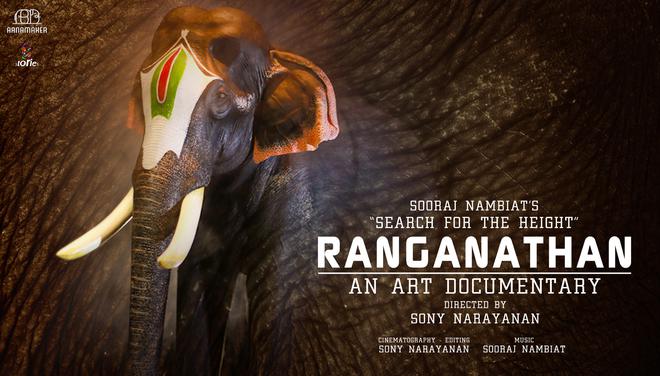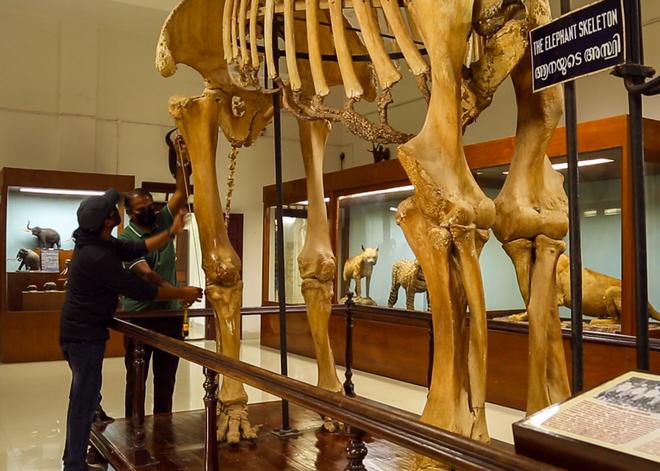As you enter the main hall of the State Museum in Kerala’s Thrissur district, you see a mounted skeleton of an elephant with the sign: ‘Anayude Asthi’ (elephant’s skeleton). For a regular visitor, it may seem like just another exhibit, but this was no ordinary tusker. An information box kept below the skeleton names the elephant — Chengalloor Ranganathan. Although there is hardly any credible information on the animal, a new Malayalam documentary suggests Ranganathan may well have been the tallest tamed elephant in Asia.
Ranganthan carried the main thidambu (idol) during Thrissur’s Arattupuzha Pooram from 1906 to 1914, until he was attacked by Akavoor Govindan, another elephant. While filming Ranganathan: Search for the Height — An Art Documentary, its creators Sooraj Nambiat and Sony Narayanan visited the house where the tusker succumbed to his wounds in 1917. “A scion in the family showed us the chains that were used to tie Ranganathan. They still preserve it as a tribute to the great elephant,” says Narayanan, the director.

From Tiruchi to Thrissur
According to some accounts, Ranganathan was brought from the famous Ranganatha Swamy temple in Tiruchi. The temple apparently bought the elephant when he was a calf. He soon grew taller than an average elephant in those days and was unable to enter the temple’s inner gates during processions. The authorities decided to let go of him and that’s how Parameshwaran Namboothiri of the Chengalloor Mana in Thrissur came to be Ranganathan’s owner in 1905.
There are no authentic records that show how Ranganathan travelled to Kerala. However, elephant lovers in the town believe that the pachyderm covered the distance of more than 350 km by foot. The journey may have taken months, and it took a toll on Ranganathan’s health. Namboothiri was fond of elephants and reportedly nursed the animal back to health.

Having grown up hearing several accounts of the elephant’s life, in 2017, Nambiat, an artist, and Narayanan, an assistant director, decided to trace its true story in the form of a documentary.
Before approaching the museum to measure the skeleton’s height, the duo began with research, collecting data from various sources, and made several drawings, sculptures and sketches of the tusker. The 2018 Kerala floods and later the pandemic put a spoke in their wheel and it wasn’t until last year that they finally managed to arrive at Ranganathan’s height with the help of the museum’s experts.

The skeleton stood tall at 345 cm (11’3”), almost a foot more than the tallest living captive elephant in India today — Thechikkottukavu Ramachandran (316 cm, 10’4”) of the Thechikottukavu Devasom temple, also in Thrissur. Says Nambiat, the film’s producer, “We spent about four hours measuring the skeleton. It was a great feeling.”
The documentary releases end of this month.
The writer is a freelance journalist based in Chennai.







